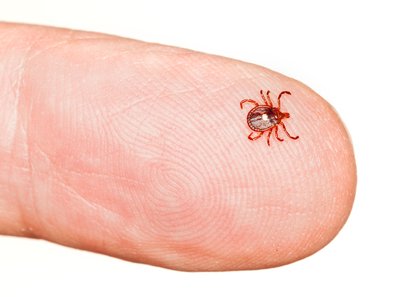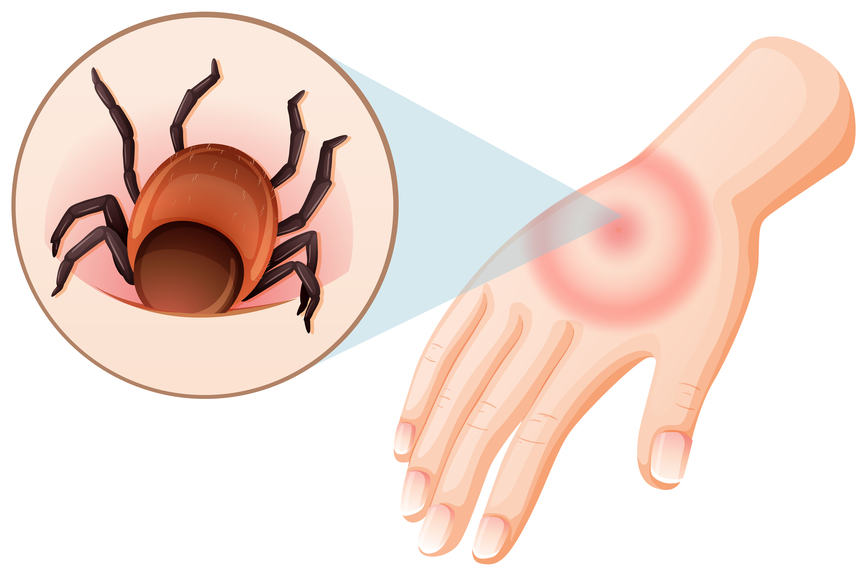What if You Encounter a Tick This Festive Season?
During the cold seasons, you could be giving yourself a false sense of security- hoping that all pests are also going on a go-slow. Well, the truth is that most wild animals do hibernate. But you may be surprised to realize that pests also feel the cold and will often come into your home to seek warmth and protection. So, then, what do you do with them once they invade your home? This post will help you discover how best to do that. But before that, what would you do if a tick crossed your path? Of course, these bugs are too small to notice, and oftentimes the sign that you encountered one is a tick bite. Should you worry about a tick bite and how do you treat it?
Is it a reason to worry?

When it comes to ticks, there are mixed reactions. This is because a tick bite isn’t necessarily a reason to get anxious. However, everyone who ever suffered from a tick-borne illness likely dreads any tick bite like the plague. So, what should you do? Have the right information:
Ticks are common in the United States. They live outdoors in:
grass
trees
shrubs
leaf pilesThey’re attracted to people and their four-legged pets, and they can easily move between the two. If you’ve spent any time outdoors, you’ve likely encountered ticks at some point.
Tick bites are often harmless, in which case they don’t cause any noticeable symptoms. However, ticks can cause allergic reactions, and certain ticks can pass diseases onto humans and pets when they bite. These can be dangerous or even deadly. Read more at Healthline
Hopefully, the tick you encounter will be harmless. But if it isn’t, then you need to be sure that you truly got a tick bite.
What does a tick bite look like?

As you seek to establish whether the symptoms you have are tick-related, the first thing you may need to know is where the tick bit you. This is critical so that you don’t imagine you have a tick bite when it really is a mosquito bite.
The tick bite itself will likely be so small and painless (just a little red dot, if anything) that you won’t actually notice it, says Qurat Mudassar, MD, an infectious disease specialist and primary care physician at Norwalk Hospital in Connecticut. You’ll likely only become aware that one of those little buggers has latched onto you if you actually find the tick attached to your skin, or if you develop one of the tell-tale rashes (or other symptoms) that signals you’ve been infected with a tick-borne illness.
The hallmark sign of Lyme infection is a rash that resembles a bullseye. “[With Lyme disease], the rash is a localized infection,” Dr. Mudassar says. “The center may be clear with a red, circular margin outside.” This rash may also become itchy or swollen for some people. Read more at Women’s Health Mag
So, do you have a “bulls-eye tattoo” that’s all red and itchy? News flash, Mr. Tick passed by you and found you too irresistible.
How do you deal with a tick bite?

Are you feeling flattered or downright scared to find that tick bite? Don’t worry, this isn’t as dreadful as you may be thinking. With the right tools and tips, you won’t have much to worry about. Here are some helpful tips…
1. Don’t panic. It’s a hard rule to follow, Pritt admits, but remember that not every tick carries a harmful bacteria or virus.
2. Forget the folk remedies: “Grab a pair of fine tipped tweezers, remove as quickly as possible as close to skin as you can by pulling it out in a smooth, continuous motion without twisting it,” Pritt says. And don’t light a match or roll it in butter, as in fact, those methods often result in only partial removal.
3. Save it: Put the tick in a plastic bag in the freezer, especially if you think it may have been attached a long time, which may increase the risk of Lyme disease transmission. That way if you decide to see a doctor, they’ll be able to identify the type of tick that bit you, and even test it for disease-causing bacteria. Keep in mind, though, that you may not get infected even if the tick tests positive, Dempsey says.
4. Watch for symptoms: A rash, headache, flu-like symptoms and joint pain can all be signs of Lyme disease, anaplasmosis and ehrlichiosis. A stiff neck and swollen lymph nodes are associated with Lyme disease. Read more at NPR
“Oh right! Now I have to preserve it?” As much as you would want to roast the tick, keep it well as evidence. Also, you’ll get to find out if you’re in trouble or not.
Now you’re better prepared for the festive season, as far as ticks go. But, as promised, here is your best bet for dealing with any kind of pest infestation. Get in touch with Backyard Bug Patrol. Give us the chance to gift you this Christmas with a stress-free holiday, with the peace of mind that comes with knowing that your yard is free from ticks. Call us today!
